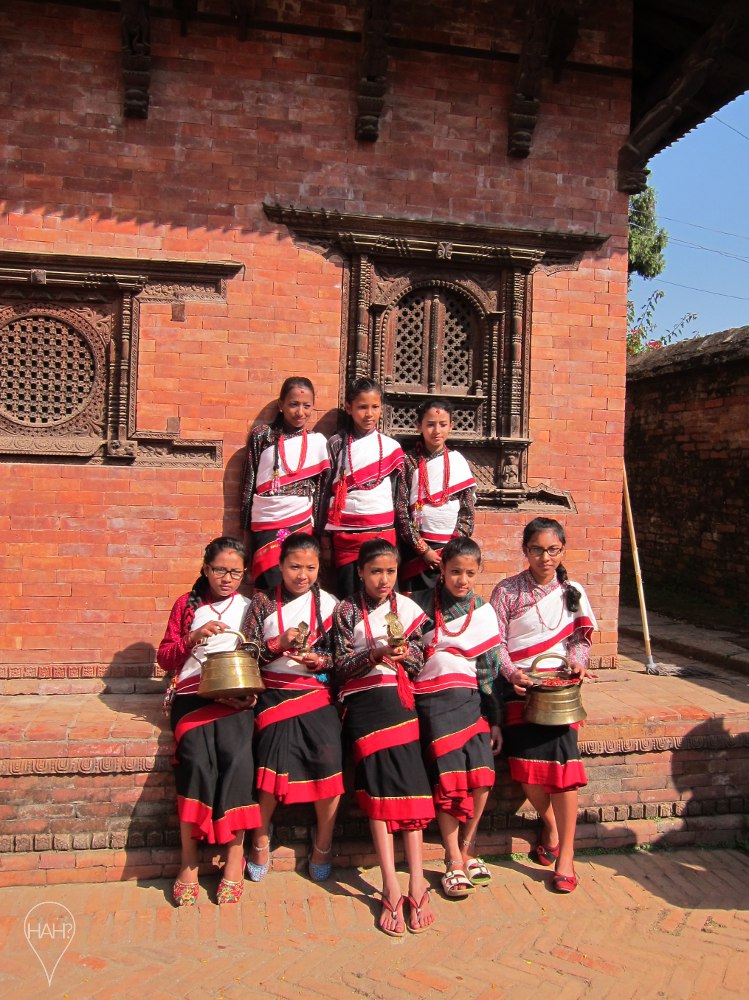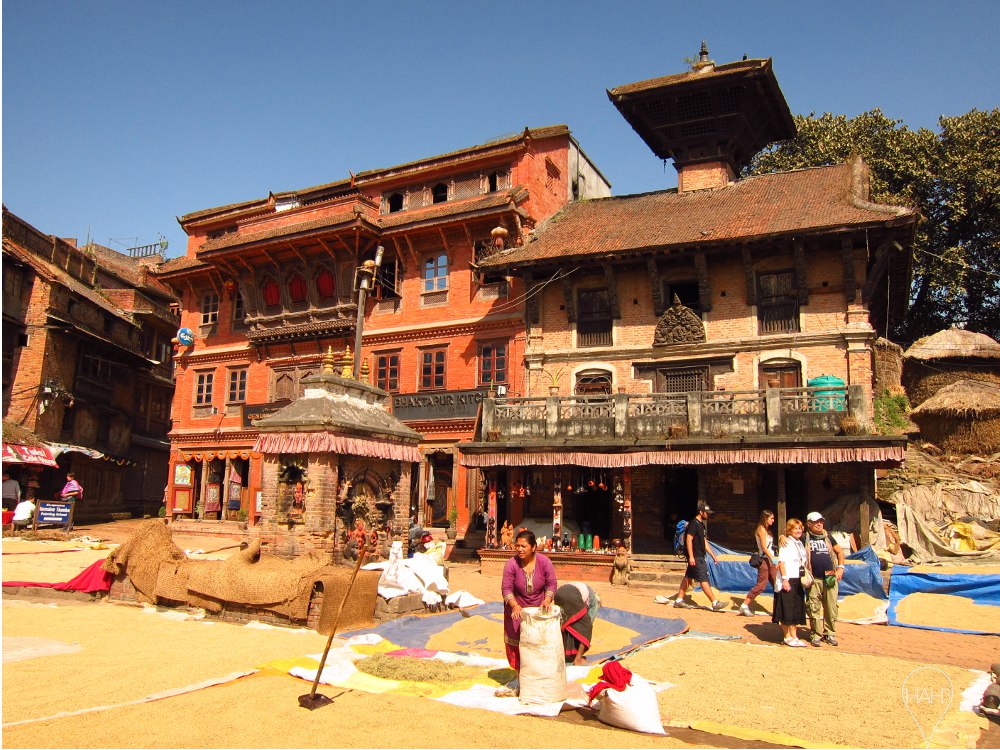“Do you need a guide?” asked the man who approached me and my mom in the parking lot outside Bhaktapur Durbar Square, offering to guide us around the heritage area.
I shook my head. “No, thanks,” I said. “We’re ok.”
“You come from far away. I guide you, only five dollars for one hour, one and a half hours.”
And that’s how the deal was made. It sounded like a bargain compared to how much I had been tipping throughout the trip.
I went over to the ticket counter and paid the $15 admission fee, the most I have ever had to fork over for entry in Nepal. (Next to the $25 visa on arrival, of course.)
Then the man came over with a tall, thin man with spectacles that looked a bit askew, as if they had been sat on and then recommissioned with a twist of a hand. “He will be your guide.” And then the first man disappeared.
“He’s your middleman, huh?” I asked the new guide, who looked timid, not the type who would approach tourists.
“No, he has a customer,” he said. “You can give me five dollars. Or ten.”
Our route to the gate of Bhaktapur Durbar Square seemed deserted. We passed by a small shrine under large tree, across a mossy bath whose water pipes had been broken by an earthquake. There were one or two Westerners, but no tour groups.
I expected a grand gate to the square, only to find a white arch with wooden doors. That’s it? I thought. Upon entering, lo and behold, it was a world ticking to a different clock.

Bhaktapur is truly in a different era from our own. There is nothing that shouts 21st century about it, save for the occasional sign for a mobile network or internet. A UNESCO World Heritage Area, it dates from the 8th century and was once a capital of Nepal.

Newari people live in Bhaktapur and their traditions have been preserved in their festivals and rituals. The red brick architecture appears throughout the city, even in the newer buildings, which makes it much more picturesque than the capital city, Kathmandu.
Many buildings in the square were damaged in the 1934 and later cleared, which is why the square appears spacious.
We first went through the Golden Gate and observed the ornate carvings of the king’s temple from the outside, as only Hindus are allowed inside.

Our guide, being a local, took us through shaded doorways and narrow alleys. At first, it felt as if we were intruding though we were not. People were going about their daily business and we weren’t getting in the way, just looking at the bunches of garlic and chili hanging from the eaves of houses and the patterns made from colored powder in front of the doors.
Pottery is one of the specialty trades in Bhaktapur. As it was the Nepalese New Year, the potters took the day off. Instead of stacks of pots under the sun, Potters Square had a carpet of golden grain laid out on the ground to dry.

We met a man who sold carved items made of bone, stone and wood. Some of the objects were truly exquisite, but being handmade, they were not cheap. And they just weren’t the kind of souvenirs we wanted, so I felt sorry that he could not make a sale.
A big woman whose breasts spilled over her sarong was taking a bath in the street. It made me wonder if they still don’t have plumbing inside their houses.
Then came the sound of dozens of motorcycles, with young men wearing white sashes making noise as they drove through the street and wished the town a happy new year.

We took another detour through some damp, mossy alleys and emerged close to Taumadhi Square. Having no expectations at all, my jaw dropped at the sight. There we were, in middle of the market, looking at the Nyatapola Temple towering over this sea of colour, with produce spread out in the square, and vendors and buyers standing over them.

I had to see it from above. I tried to keep my mild fear of heights from kicking in as the steps were a bit steep. Looking at the old ladies making the climb with me help me keep up the pace. As I went around the top tier, I saw two female Asian tourists taking photos of local youngsters. They seemed to be used to the attention.

Our next stop was a thanka school. The artists were also on holiday, but the caretaker was a teenage girl in braces who spoke excellent English. She detailed the process of creating Buddhist mandalas and the differences in each level of quality.
We inquired about the price. For the time it takes to create a single one, $100 for a one-square-foot thanka by a master sounds inexpensive, but we just weren’t in the market for religious artwork, though it only takes up very little luggage space.
At that point, I felt like coming back just to be an apprentice. The fine brushwork is simply amazing to me. As my mom and I paint, we wanted to buy the single-hair brushes, but we were told that the painters make it themselves out of fur from a cat’s tail. Finding a cat is one thing, but how to control such a brush is another matter. One must master one’s heartbeat to get the stroke right!
The tour ended with a trip to the pashmina seller, who enlightened us about cashmere quality and how the so-called pashmina sold everywhere is a fake. He demonstrated this by burning the fringes and asking us to smell them. The difference is distinct–the smell of burnt plastic versus the smell of burnt hair. According to him, pashmina and cashmere are practically synonymous and the multi-colored ones with complicated patterns and designs are usually not real. A tip: the best care is dry cleaning but soaking them in shampoo and not wringing them would be the next best thing.
After buying a stole and a scarf, it was time to leave. I said goodbye to our guide, whose name I didn’t catch, and gave him $15.
Just two hours in Bhaktapur left an impression on me that’s hard to shake off. Yes, the view of the Himalayan range is a stunning sight, but Bhaktapur is my favorite place in Nepal. I felt a sense of continuous history and living heritage there, which is missing from many sights I have been to on my travels, UNESCO-listed or otherwise. I didn’t have time to see Patan Durbar Square, but two out of three isn’t so bad. Don’t miss the Durbar Squares on your Nepal trip.


Awesome account of your trip to Bhaktapur!
LikeLike
Thanks, Bruno!
LikeLiked by 1 person